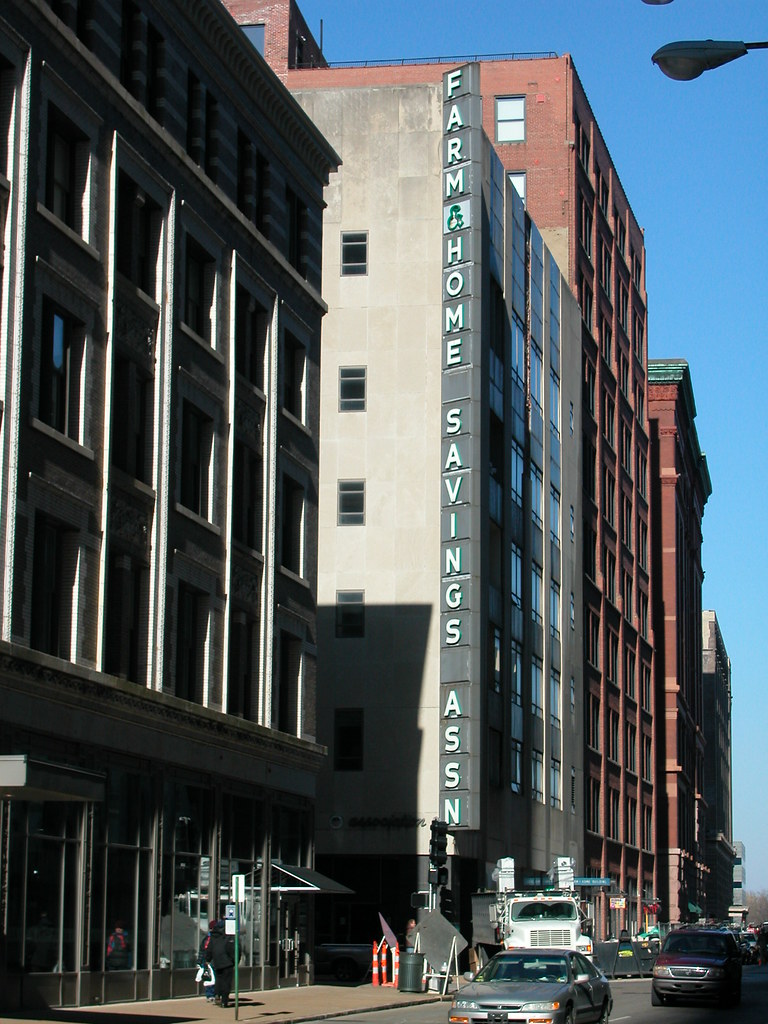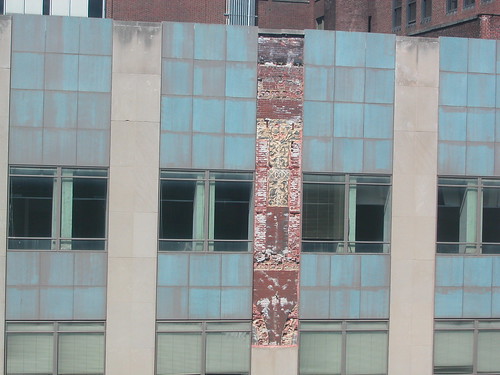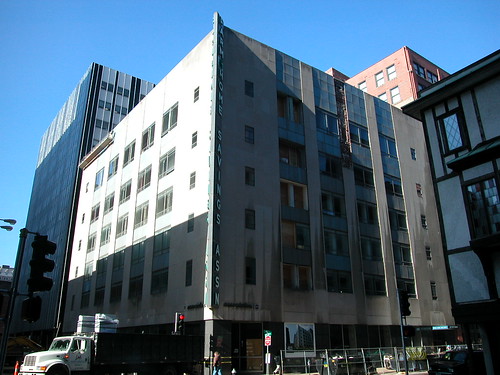 Downtown development may be crawling along right now, but one stand-out project is leaping ahead. LoftWorks is redeveloping the Farm and Home Building (to be known by its 10th Street address as the "411") at the northwest corner of 10th and Locust streets. Several things are notable about the project, which is well underway and due for completion next year. For one thing, the end use will be the original -- office space with ground-floor retail. For another, the 60,000 square-foot building will get a green rehab, with a vegetation roof and gray- and rainwater recycling systems. The $12.7 million project shows that LoftWorks is downtown's Little Engine That Will. LoftWorks just completed rehabilitation of the Syndicate Trust Building, opened Left Bank Books across the street from the Farm and Home.
Downtown development may be crawling along right now, but one stand-out project is leaping ahead. LoftWorks is redeveloping the Farm and Home Building (to be known by its 10th Street address as the "411") at the northwest corner of 10th and Locust streets. Several things are notable about the project, which is well underway and due for completion next year. For one thing, the end use will be the original -- office space with ground-floor retail. For another, the 60,000 square-foot building will get a green rehab, with a vegetation roof and gray- and rainwater recycling systems. The $12.7 million project shows that LoftWorks is downtown's Little Engine That Will. LoftWorks just completed rehabilitation of the Syndicate Trust Building, opened Left Bank Books across the street from the Farm and Home.What is most astounding to me, however, is that the rehabilitation will preserve the existing exterior appearance of the building. In most cases, that's a given, but the Farm and Home Building is actually a morphed version of the Kinloch Building. In 1954, the owners of the Classical Revival building designed by Widmann, Walsh and Boisselier decided to join the downtown modernization trend. With construction materials scarce and expensive after World War II, many owners tried inexpensive projects to give their buildings a mid-century vibe. Some simply removed cornices. Others reclad just the ground floors so that the sidewalk views were clean and modern. Others went all-out and completely clad historic buildings in modern materials.
 The Farm and Home Building is one of the most extensive of these projects -- not only was the masonry building reclad, but its terra cotta ornament ground off to accept the new granite, concrete and metal panels. (Other notable projects from this period include the Dorsa Building, the St. Louis Post-Dispatch Building and the Mercantile Library Building.)
The Farm and Home Building is one of the most extensive of these projects -- not only was the masonry building reclad, but its terra cotta ornament ground off to accept the new granite, concrete and metal panels. (Other notable projects from this period include the Dorsa Building, the St. Louis Post-Dispatch Building and the Mercantile Library Building.)While the Farm and Home is not a knock-out work of mid-century slipcover design, it's handsome. Other recladding jobs, like the garish work that covered the Post-Dispatch Building at 1139 Olive Street, dated rather quickly and raised the question of whether or not they were actually an improvement. Many developers have chosen to remove their cladding, like at the Post-Dispatch Building, and mostly the recladding work has proven reversible. Not so at Farm and Home.
 In order to qualify for the National Register of Historic Places and thus for state historic rehabilitation tax credits, a building must exhibit integrity of historic design. To nominate the Farm and Home Building as the Kinloch Building would have required extensive reconstruction work -- not eligible for credits -- before a nomination could even take place. Hence, LoftWorks successfully explored a different strategy: list the Farm and Home for what it now is, an early example of extensive mid-century modernization design. The National Park Service listed the Farm and Home Building on the National Register on October 29, 2008. The Farm and Home Building now is officially historic because of its slipcover.
In order to qualify for the National Register of Historic Places and thus for state historic rehabilitation tax credits, a building must exhibit integrity of historic design. To nominate the Farm and Home Building as the Kinloch Building would have required extensive reconstruction work -- not eligible for credits -- before a nomination could even take place. Hence, LoftWorks successfully explored a different strategy: list the Farm and Home for what it now is, an early example of extensive mid-century modernization design. The National Park Service listed the Farm and Home Building on the National Register on October 29, 2008. The Farm and Home Building now is officially historic because of its slipcover.





3 comments:
Lovin' it.
I love it too. I'm glad they left the slipcover on the building!
This project is going to be so cool once it's done. I love it.
Has the Mercantile Library Complex achieved historic status as well? It's so easy to overlook the Merc, but I think - due to its massive size and prominent location - it would really be a transformative project for downtown if someone were to renovate it.
Post a Comment